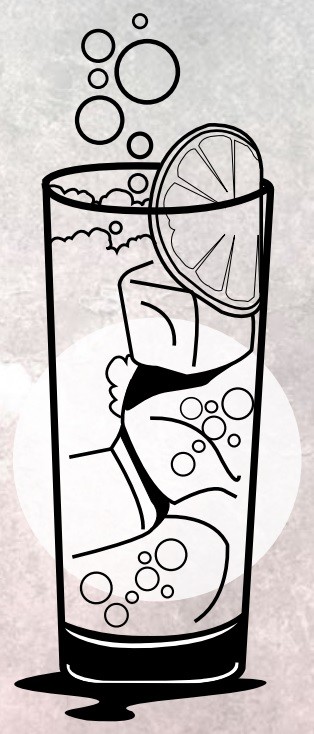Cocktail making techniques have evolved light years past shaken or stirred and setting drinks alight. Drinks infused with wood smoke? Old hat. Now, nothing is sacrosanct in the endless pursuit of flavour


GOING FOR CLARITY
What’s more theatrical than being served a crystal clear drink and discovering that it’s packed with flavour? Clarification involves removing opaque matter from cocktail components and turning mixtures like juices into cleaner-tasting and flavourful ingredients. There are several ways to achieve this – from just putting things through a coffee filter to spinning the liquid in a lab-grade centrifuge. One standout method that gives a clear liquid for relatively little equipment capital is to set the liquid you want clarified with agar-agar, freeze it and later thaw it at room temperature before running it through a paper filter or cheesecloth. The agar-agar consists of long molecule chains that form a web, which traps solids so the liquid passes through particle-free.

COCKTAILS
The very same barrel that makes ageing whisky or rum a worthwhile venture can also be applied to cocktails. Oak casks are usually used to age spirit-forward cocktails, which not only take on the flavours of the oak but also taste smoother because of it. Many bars have comprehensive programmes built around ageing cocktails. The Manhattan here in Singapore, for example, has a rickhouse filled with custom-made new oak barrels containing everything from its namesake cocktail to solera-aged negronis. Drinks typically age for between six and 12 weeks, but there are some that have seen six months to three years in a barrel. Bubbles in a cocktail are traditionally achieved by adding an already carbonated beverage like soda water, tonic or champagne to a drink. Alternatively, you could carbonate the drink directly, allowing you to carefully control carbonation levels. There are plenty of home carbonators that use carbon dioxide cartridges. Another idea: if parts are readily available, rig a cheap, powerful and versatile system using food-grade gas.

ADDING FIZZ
Bubbles in a cocktail are traditionally achieved by adding an already carbonated beverage like soda water, tonic or champagne to a drink. Alternatively, you could carbonate the drink directly, allowing you to carefully control carbonation levels. There are plenty of home carbonators that use carbon dioxide cartridges. Another idea: if parts are readily available, rig a cheap, powerful and versatile system using food-grade gas.

SUB-ZERO FREEZING
At -200 deg C, liquid nitrogen can accomplish feats no ordinary freezer is capable of. Ingredients like fresh mint or basil can be flash-frozen and pulverised into a fine powder with a muddler – allowing you to create drinks like mojitos without pieces of plant matter floating in it. Liquid nitrogen can also rapidly chill glasses, which is perfect for drinks that are served straight up such as martinis or a gimlet.

EXTRACTING MAXIMUM FLAVOUR
While restaurants buy $5,000 Pacojets to make unbelievably smooth desserts, soups and sauces, the machine has found use in technique-forward cocktail bars, helping them to puree deep-frozen ingredients into ultra-fine textures. Juan Yi Jun, co-founder of Singapore bar No Sleep Club, uses one to almost liquefy fresh kyoho grapes for a cocktail with kombu-steeped cognac and vermouth. The grapes would usually yield little usable liquid when juiced.

NUKING COCKTAILS
The often-maligned microwave oven finds new meaning with London-based cocktail wizard Ryan Chetiyawardana, also known as Mr Lyan. He uses the microwave to zap manhattans and negronis to rapidly infuse ingredients and bring flavours together. The closed container he uses as part of the process prevents any alcohol from being cooked off. Of course, you should wait for your drink to cool completely before imbibing.

TRANSFORMING SPIRITS
Fat washing involves steeping an ingredient with a high fat content, like chocolate, cream or bacon, in a spirit and then freezing the product to solidify the lipids, so they can be removed. As alcohol can extract both oil and water-soluble compounds, this creates a spirit that takes on many flavours from the infusion. It also takes on a smoother, more viscous mouthfeel, thanks to dissolved oils. This technique is also possible with wax. steeping a cocktail with beeswax imparts light floral fragrance and gives your drink a more textured mouthfeel.
TEXT WEETS GOH ILLUSTRATIONS ASHRUDDIN SANI























